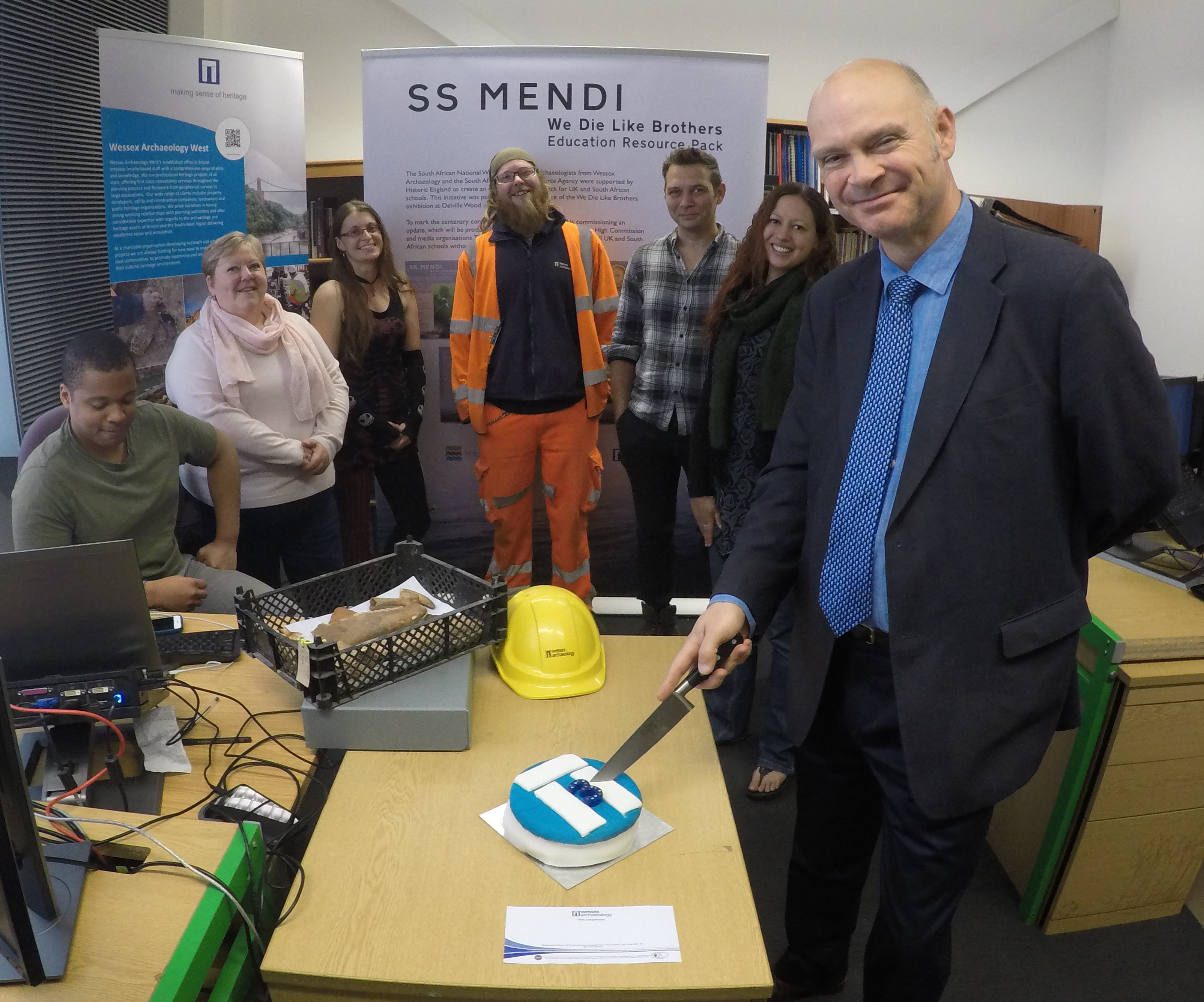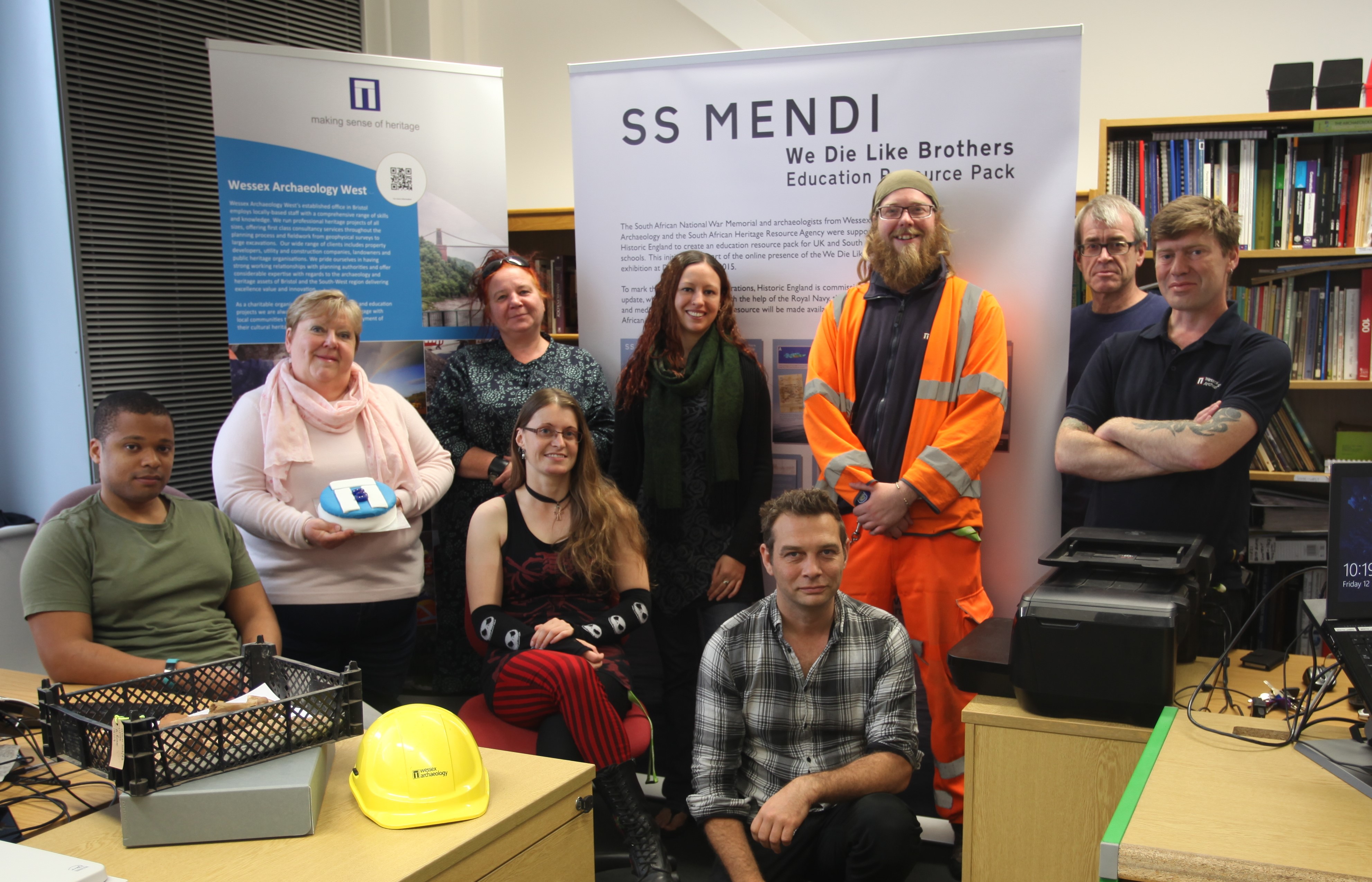Three years of Wessex Archaeology West
Wessex Archaeology is one of the largest and longest-established archaeological contractors in the UK. Wessex Archaeology West is increasing WA’s geographic coverage, along with other regional offices in Kent, Yorkshire, Wales and Scotland.

Three years ago, Wessex Archaeology West began with a small windowless office and tool store in the centre of the city and a team of technicians (diggers!). Within one year we were working from Warwickshire to Cornwall and from South Wales to the London fringe, becoming a regional office within two years. Increased turnover meant the need for physical expansion and a move in January 2016 to bigger premises at the newly built Filwood Green Business Park. Today Wessex Archaeology West boasts a much larger fieldwork team, Heritage specialists, multi-skilled Project Managers, Geophysical Survey and Community services. Recognising Bristol city’s maritime heritage, most recently we have been joined by a Senior Officer from the Wessex Coastal & Marine team.
In addition to delivering commercial archaeological projects and heritage advice to clients, Wessex Archaeology West has given talks and presentations to local history societies, community groups, appeared on local media and developed strong links with Bristol Culture for the annual Festival of Archaeology.
Several members of our team specialise in deep urban archaeology with a successful major excavation and building recording of a former slum area in Bath. Highlights of this high-profile project included locating part of the city’s medieval defensive ditch, uncovering a previously unknown 17th/18th-century footbridge, and fully excavating the remains of 40 buildings associated with Bath’s 18th-century quayside. The buildings were identified as a mixture of warehouses, factories, pubs, a public wash house known as Milk Street Baths and several brothels.
Wessex Archaeology West have also assisted renovation works at Holy Trinity Church in Bradford on Avon. Our team identified a series of burials, scientifically dated to the 9th and 10th centuries, supporting the hypothesis that the medieval church stands on the site of a lost Saxon Minster. At the neighbouring 10th-century Church of St Laurence, our Reflectance Transformation Imaging (RTI) photography has captured the most detailed image yet taken of a Saxon relief-carved alter piece. RTI has since been rolled out across other Wessex Archaeology projects.
Highlights of our more rural projects include the excavation of several prehistoric and Romano-British settlements near Swindon, finding evidence for Saxon continuation of occupation close to Hucclecote Roman Villa in Gloucester and assisting our head office during the excavation of a previously unknown large Romano-British roadside settlement near Beanacre, Wiltshire.
Wessex Archaeology West is currently involved with major infrastructure programmes in and around Bristol, Somerset, Devon and the Midlands, as well as large-scale housing developments in Gloucestershire and Wiltshire. We are also assisting the expansion of the new Wessex Welshpool office’s involvement with renewable energy schemes in South and West Wales. In 2017 staff from Wessex Archaeology West are looking forwards to working as far afield as Shetland, Europe and the Channel Islands and appearing on national media. Watch this space…..or follow us on twitter @wessexwest to find out more about our exploits!
